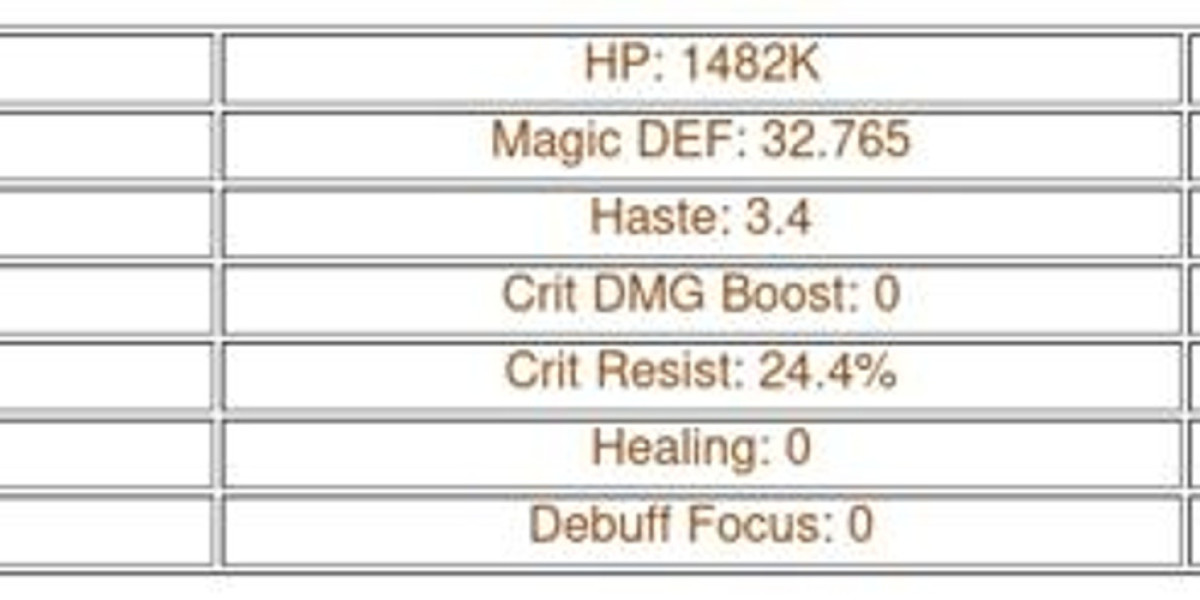Stress-Related Chronic Pain emerges when the body's natural stress response remains activated for extended periods, leading to physical discomfort. This condition highlights the intricate relationship between mental strain and physical well-being. When under stress, the body produces stress hormones such as cortisol, which, in excess, can contribute to heightened pain sensitivity and inflammation. Chronic stress also impacts the nervous system, altering the way pain signals are processed and perceived.
The development of this type of pain often involves an ongoing cycle. Stress increases muscle tension and reduces the body's ability to heal and recover, which can lead to persistent aches. This physical discomfort, in turn, can worsen stress levels, creating a feedback loop that prolongs and intensifies symptoms.
Common triggers of stress-related pain can include overwhelming life demands, interpersonal conflicts, and financial pressures. Over time, these stressors can affect various parts of the body, with pain commonly manifesting in the neck, shoulders, back, or head. Unlike pain caused by a direct injury or illness, stress-related pain often lacks a clear physical source, making it harder to pinpoint and treat effectively.
Recognising this mind-body connection and understanding the ways chronic stress affects pain perception are important steps towards implementing effective relief strategies tailored to individual needs.
Identifying Symptoms
1. Persistent Muscle Tension and Aches
Chronic stress often causes muscles to remain in a constant state of tension, leading to ongoing pain in areas like the neck, shoulders, and lower back. This tension can become habitual, resulting in soreness or stiffness even when you’re at rest.
2. Frequent Headaches or Migraines
Stress can trigger tension headaches and migraines due to tightened neck and scalp muscles or hormonal fluctuations. These headaches often occur after long periods of emotional strain or mental exhaustion.
3. Digestive Discomfort and Abdominal Pain
The gut and brain are closely connected, meaning stress can directly impact digestion. Symptoms such as stomach cramps, bloating, constipation, or irritable bowel syndrome (IBS) may be signs that emotional stress is manifesting physically.
4. Joint and Nerve Pain Without Clear Injury
When stress hormones like cortisol remain elevated, they can cause inflammation that aggravates joints and nerves. If you experience ongoing pain or tingling without a specific injury, stress-related inflammation might be the cause.
5. Fatigue and Sleep Disturbances
Chronic stress disrupts the body’s natural sleep-wake cycle, leading to poor rest and heightened pain sensitivity. This creates a cycle where fatigue intensifies discomfort, making recovery more difficult and prolonging chronic pain symptoms.
The Science Behind Stress and Pain
The connection between stress and pain involves complex interactions within the body, particularly focusing on the stress response system. When experiencing stress, the body activates the hypothalamus-pituitary-adrenal (HPA) axis, triggering the release of hormones such as cortisol and adrenaline. While these hormones are beneficial in short bursts, prolonged activation can negatively affect the body by amplifying pain perception and promoting inflammation. This biochemical state can make muscles tense and more prone to discomfort, creating an environment where pain can thrive.
The nervous system plays a crucial role in this process. Prolonged stress can heighten the sensitivity of nerve pathways, leading to exaggerated pain signals being sent to the brain. This means that even mild physical sensations can be interpreted as more intense pain. The brain, in turn, plays a significant role in modulating pain perception, with heightened emotional distress often intensifying the sensation of discomfort.
Chronic stress can also disrupt the body’s natural ability to heal and repair tissues, prolonging recovery times. Additionally, stress can alter sleep patterns and suppress the immune system, both of which are essential for maintaining overall physical health. These physiological effects create a cycle that not only worsens existing pain but can lead to the emergence of new pain areas over time.
Stress Management Techniques
Stress management is essential in reducing the physical and emotional toll that chronic pain can take. Incorporating relaxation techniques like progressive muscle relaxation or guided imagery into daily routines can help regulate the stress response. These methods work by calming the mind and encouraging the body to release tension, which can ease pain levels.
Practising slow, controlled breathing for a few minutes each day is another simple yet effective technique. It not only aids in reducing stress hormones but also helps to interrupt the cycle of stress and pain. Scheduling short breaks during the day to engage in calming activities, such as reading, journaling, or listening to soothing music, can further alleviate stress.
For some, developing a routine of light physical activity, such as stretching or walking, acts as both a stress reliever and a way to loosen tight muscles. Combined with consistent sleep patterns, these measures can significantly improve the body’s ability to manage pain.
Time management is another critical aspect, as overcommitting or juggling too many tasks can worsen stress levels. Learning to set boundaries, prioritise tasks, and delegate responsibilities where possible can lighten mental burdens. These practical adjustments, alongside self-care practices, empower individuals to address stress in a way that supports both their mental and physical health.
The Role of Mindfulness
1. Enhancing Mental Clarity and Focus
Mindfulness helps individuals stay present and aware of their thoughts and surroundings. By practicing mindfulness techniques such as meditation or deep breathing, people can reduce distractions, improve concentration, and make more thoughtful decisions in daily life.
2. Reducing Stress and Anxiety
One of the most recognized benefits of mindfulness is its ability to calm the mind. Regular mindfulness practice lowers cortisol levels—the body’s stress hormone—helping individuals manage anxiety, tension, and emotional overwhelm more effectively.
3. Promoting Emotional Regulation
Mindfulness encourages greater self-awareness, allowing individuals to recognize and respond to their emotions instead of reacting impulsively. This emotional balance fosters healthier relationships and a more positive outlook on life.
4. Supporting Overall Wellbeing
Beyond mental health, mindfulness contributes to physical wellness by improving sleep, lowering blood pressure, and enhancing immune function. When integrated into daily routines, mindfulness promotes a holistic sense of peace, balance, and wellbeing.
Exercise and Physical Therapy
Physical activity is an essential component in addressing chronic pain linked to stress, as it aids in loosening tense muscles and improving mobility. Stretching exercises, in particular, can release physical tension accumulated from stress, helping the body regain a sense of ease and flexibility. Gentle forms of movement like yoga or Pilates encourage proper posture and alignment, reducing strain on commonly affected areas such as the back and shoulders. Aerobic exercises, including brisk walking or swimming, enhance blood circulation, which can ease muscle stiffness and promote healing.
Targeted physical therapy provides an opportunity to address specific areas of pain with professional guidance. Therapists can recommend customised exercises that focus on strengthening weak muscles or improving balance, which may prevent further discomfort or injury. Moreover, techniques such as manual therapy, where therapists use their hands to manipulate soft tissues, can help reduce muscle tightness and improve range of motion.
For those new to exercise, starting with small, manageable activities can prevent overexertion and encourage consistency. Even a few minutes of daily movement can contribute to long-term improvements in pain levels. By incorporating these practices into a routine, individuals can better manage the physical impacts of stress and reduce pain over time.
Dietary Influences
A well-planned diet can play a pivotal role in alleviating stress related chronic pain by supporting overall health and reducing inflammation. Certain foods have been found to have anti-inflammatory properties that may aid in pain management. Including foods rich in omega-3 fatty acids, such as salmon, mackerel, and flaxseeds, can help reduce inflammation. Likewise, berries, spinach, and other leafy greens provide antioxidants that support the body's natural healing processes. Spices like turmeric, known for its active ingredient curcumin, can also contribute to reducing inflammation when incorporated into meals.
Hydration is equally important, as even mild dehydration can heighten the perception of pain. Incorporating herbal teas or water infused with lemon can be a refreshing alternative to sugary drinks, which may worsen inflammation. Whole grains such as quinoa and oats help stabilise blood sugar levels, preventing the energy crashes that can exacerbate stress and discomfort.
It is advisable to limit the intake of processed foods, alcohol, and high-sugar snacks, as these can trigger inflammation and hinder the body’s ability to manage stress effectively. Regular meal timings, with balanced proportions of proteins, healthy fats, and carbohydrates, can keep energy levels stable, further aiding in both physical recovery and emotional well-being.
Psychological Support
Psychological support plays an essential role in addressing the mental challenges associated with stress related chronic pain. Therapy offers a structured environment where individuals can explore the emotional aspects of their pain and gain insight into how stress influences their physical well-being. Approaches such as cognitive-behavioural therapy (CBT) can be particularly beneficial, as they provide tools to identify and change thought patterns that may worsen pain. These techniques focus on breaking the cycle of negative thinking, allowing individuals to adopt more constructive ways of coping.
For those seeking connection, joining support groups can be an effective way to share experiences with others facing similar challenges. This sense of community often provides emotional relief and reassurance, as participants exchange practical advice and mutual encouragement. Therapists may also recommend relaxation-focused therapies such as mindfulness-based stress reduction (MBSR), which combines meditation and awareness practices to tackle both stress and pain.
Additionally, individualised counselling can uncover specific stress triggers and help develop personalised strategies to manage them. Professional guidance often equips individuals with greater emotional resilience, fostering a more balanced response to life’s pressures. By focusing on the psychological aspects of chronic pain, individuals can build a foundation for better managing their condition over time.
Conclusion
Effectively addressing Stress-Related Chronic Pain involves recognising its multifaceted impact on both mind and body. Understanding the underlying mechanisms of how prolonged stress affects pain perception empowers individuals to take informed steps towards management. Incorporating a variety of practices tailored to individual needs can help break the cycle of stress and discomfort. Techniques such as mindfulness allow for a deeper connection between mental and physical states, fostering greater control over how pain is experienced. Equally, prioritising physical health through movement and appropriate nutrition offers tangible benefits for managing persistent pain. Simple adjustments, like including anti-inflammatory foods in daily meals or engaging in light, consistent exercise, can complement other stress management strategies. Psychological support, whether through professional therapy or community groups, provides additional tools to navigate the emotional challenges that often accompany chronic pain.
6 FAQS
1. What are the common triggers for stress-related chronic pain?
Common triggers include work-related pressure, relationship difficulties, financial concerns, and prolonged anxiety, which can all contribute to physical discomfort Stress-Related Chronic Pain.
2. How can I recognise the signs of stress-induced pain?
Stress-induced pain often appears without an obvious physical cause and may worsen during challenging emotional periods. Tracking patterns through a symptom diary can provide clarity.
3. What role does exercise play in managing chronic pain?
Exercise helps by improving blood flow, reducing muscle tension, and enhancing mobility, all of which alleviate discomfort. Light activities like yoga or walking are particularly effective.
4. Are there any specific foods that can help manage chronic pain?
Anti-inflammatory foods like leafy greens, oily fish, and turmeric support the body’s natural healing processes, while staying hydrated is equally essential for managing discomfort.
5. How does psychological support assist in pain management?
Therapies like CBT help identify thought patterns that worsen pain, while support groups provide community and shared strategies for coping.
6. Is it possible to prevent stress related chronic pain?
Yes, adopting stress management techniques, maintaining a balanced lifestyle, and prioritising mental and physical health can reduce the likelihood of developing stress-induced pain.
Related Business Listings |










